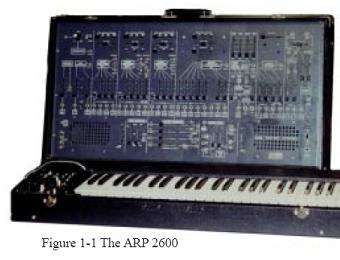Title link takes you to some shots of the FR777 and a modifications rack. The mods were done by Peter Grenader of
Buzzclick Music. Details are listed below. Note that they are written more like instructions on how to do the mods vs. the end result. BTW, my first thought was what if this is the
Future Retro XS expander that's coming. My second thought is how will it compare to what's coming. Via RaZoR on AH. This unit is for sale. If you are interested contact razor[@]sbcglobal.net. It has OS 3.0 installed and the asking price is $800.

Modifications:
1 Snappy filter envelope
Short out R78 (47K) or replace R78 with a 50K
potentiometer for adjustable accent times and shortest
possible envelope times for the filter's envelope.
NOTE: You will probably want to make this mod
switchable between original and mod version. To do so
use a DPDP switch and use it to short resistor R78 or
to switch between resistor R78 and the 50K
potentiometer.
2 Faster envelope time for OSC B's sweep
Same procedure as the "snappy filter envelope" but
with resistor R68 (47K).
3 Secondary CV in for OSC B
For this mod we will let the original CV IN be the
control for oscillator A and the secondary CV IN to
control oscillator B. First locate the trace on the
top side of the circuit board that runs from S1 (OSC
B's internal/external switch) to S2 (OSC A's
internal/external switch). The trace will be just to
the right of the two trim pots located between these
CV switches. You will need to cut this trace and wire
it to the tip of the jack you will use for the
secondary CV input. Next, connect the sleeve of the
jack to ground. You should also run a diode (IN4148
type) from the secondary CV IN to +6v and another to
ground. This will help protect the circuit from high
positive voltages or negative voltages.
4 External filter CV input
For this mod you can use the same procedure as the
"secondary CV in for OSC B" except obviously you won't
need to cut the trace for the switches as mentioned
above. Locate R37 (0 ohm) resistor and lift the lead
that connects to diode D31, located just next to R37.
For this mod we will run a wire from the tip of the CV
jack to be used, to the lead of the diode D31 that was
connected to R37. If you use a switching jack you can
run a wire from the lifted lead of R37 to the
switching terminal of the jack. This way when nothing
is inserted in the jack, connection for the circuit
will be as it was originally. Next, wire up the jack's
sleeve to ground. Positioning of the jack is up to
you.
With this mod you can use the CV type switch in the
filter mod section to select how the CV affects the
cutoff frequency of the filter. You can use the CV
amount knob to control the amount of affect the CV has
on the filter's cutoff frequency.
Control voltages should run between 0 and +6v, avoid
higher voltages than +6v or any negative voltages!
5 Infinite sustain for sustained or glided notes
Infinite sustain
As in the original 303, if a long sustain is written
for a note's duration the VCA's gate signal will
eventually decay until no sound is heard. You can
change this so that the gate signal never decays, and
infinite gate times are possible. For this mod, lift
the anode end (side opposite the black band) of diode
D20 and run a wire to connect the lifted end of D20 to
the anode of diode D19. You could also use a switch to
make the connection of D20 selectable between its
original source and D19.
6 Turning your VCA's gate into an ASR type envelope
Variable attack time
You can adjust the time it takes for the gate signal
to reach its full potential by increasing the
resistance of resistor R176 (10K). For adjustable
attack times, lift one end of R176 and run a wire from
the lifted end of R176 to one of the outer terminals
of a potentiometer. Run another wire from the hole
which R176 went to, to the other outer terminal of the
potentiometer. Connect the wiper of the potentiometer
to one of its outer terminals so that the resistance
of the pot increases as you turn the potentiometer
clockwise. Note that more resistance creates longer
attack times, I would recommend using a 50K or 100K
potentiometer for this mod, but feel free to
experiment.
7 Increasing the overall amount all modifiers have on
the filter's cutoff frequency
For those of you who want some truly bizarre filter
effects try this one.
By increasing the resistance of resistor R128 you will
increase the range of each one of the filter's
modifiers (Ie. CV/Warp, Osc B amount, Envelope
amount). Lift one end of R128 (2.2K) and run a wire
from the lifted end of R128 to one of the outer
terminals of a potentiometer. Run another wire from
the hole which R128 went to, to the other outer
terminal of the potentiometer. Connect the wiper of
the potentiometer to one of its outer terminals so
that the resistance of the pot increases as you turn
the potentiometer clockwise. Note that more resistance
results in more affect the modifiers will have on the
filter's cutoff frequency. Try using a 50K
potentiometer for this mod, and again experiment.



















